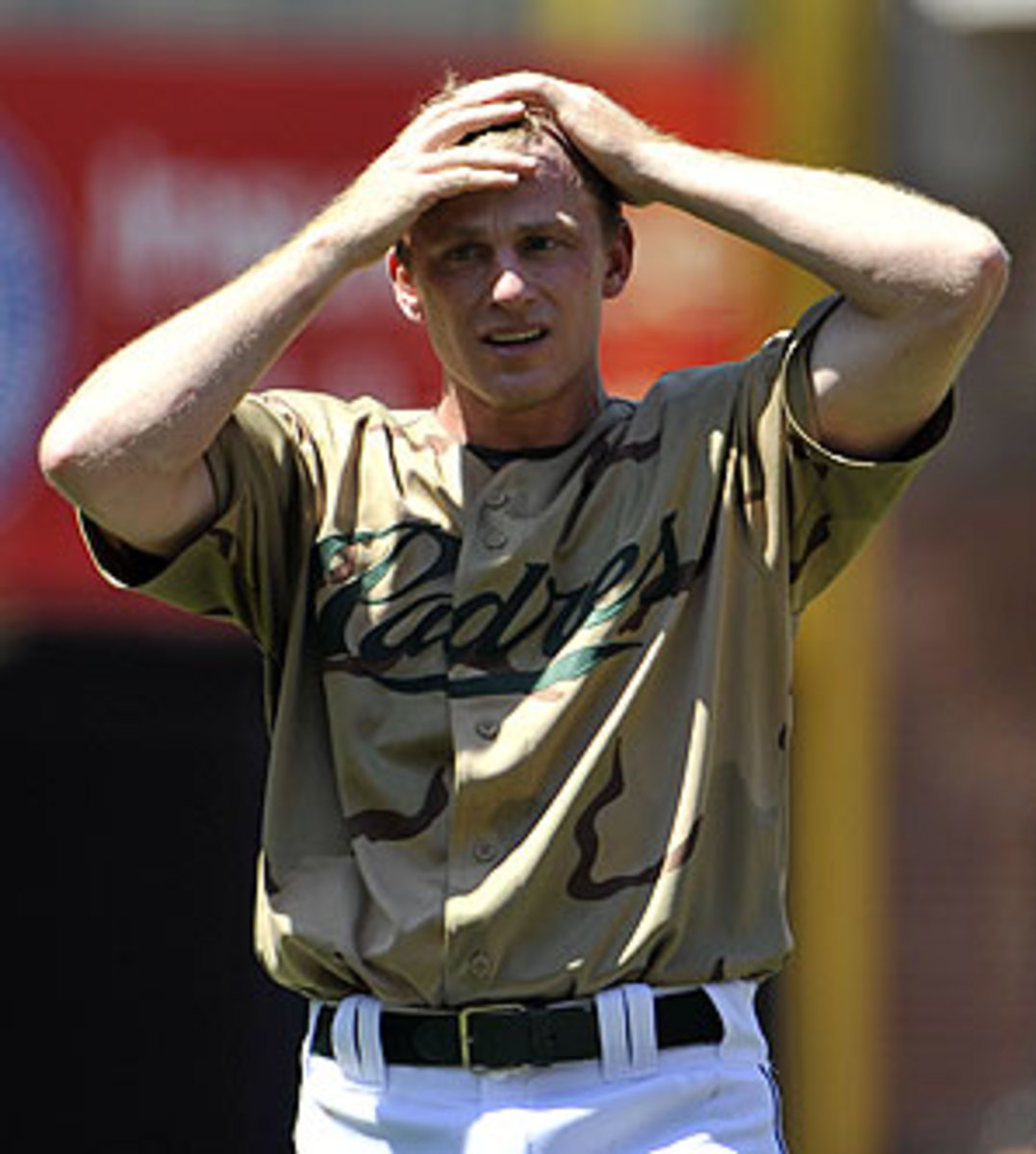
Why the Padres dream season has been a nightmare of late
Padres infielder David Eckstein came to the plate with one out and a runner on third base in the seventh inning Monday night, exactly the kind of situation that the Padres converted for the first five months of the season and squandered for the past two weeks. Eckstein saw seven pitches from Dodgers reliever Jonathan Broxton, three of which he fouled off, before lifting a run-scoring fly ball to medium-range center field.
Eckstein's sacrifice fly helped the Padres break a 10-game losing streak, but just as significant, it reminded them how they climbed atop the National League West in the first place. This is a team with a margin for error as slender as the 175-pound Eckstein himself, counting on sac flies and infield singles because they can't wait for the three-run bombs. At their best they win 3-2. At their worst they lose by the same score. Their style keeps them competitive, but it also makes them vulnerable, because when every game is decided by one play, the slightest slippage can cause a spiral.
From April to August, baseball theorists busied themselves trying to figure out how the Padres were winning so much, despite a $38 million payroll and an offense that ranks 21st in the major leagues in runs, 25th in batting average and 25th in slugging percentage. Now they are trying to figure out how such a powerhouse could be losing. Here are five reasons:
The Padres have used the same five starting pitchers for all but four games, a major reason whey they are still in first place, and also a major reason why are they are losing a grip on it. Mat Latos, Clayton Richard and Wade LeBlanc have already surpassed their previous career-high for innings -- the one downside of health -- and top relievers have been stretched by all those close finishes. The Padres still lead the majors in ERA, but they showed the wear on their recent slide, giving up five runs per game.
In mid-May, the Padres dropped three straight, and then they forgot what losing streaks feel like. Eleven times they lost two games in a row, but never a third, crucial for an upstart to maintain momentum. In late August, they suffered their second three-game skid of the season, and they were finally confronted by the adversity they managed to avoid all summer. They could not handle it, as three losses turned to 10, a 6 1/2 game lead shrunk to 1, and the Padres were left to wonder if they have the staying power to withstand such a skid and still reach the playoffs..
Most first-place teams have set lineups, but the Padres are the rare contender using a platoon at as many as four positions. Jerry Hairston Jr. made the system work with his ability to fill in almost everywhere. Hairston Jr. went to the disabled list with a strained elbow the day the descent began. Before that the Padres lost center fielder Tony Gwynn Jr. with a broken bone in his hand, and although Gwynn does not hit much, he was the fastest player and best defender on a club building around speed and defense.
Even when the Padres had the best record in the NL, no one paid much attention to them. They were almost never on national television and Petco Park was rarely full. The sleepy atmosphere worked to their advantage, as it did for the 2008 Rays, both railing against opponents and media members who did not take them seriously. But the Rays improved once the lights came on, while the Padres regressed, starting when the Phillies came to San Diego for the last weekend of August (with Fox in attendance) and swept their hosts.
The baseball season is long enough to weed out every fluke, even if takes all six months to do so. Teams can only win so many one-run games until they lose some. They can only get so many clutch hits until they run dry. The Padres do not draft well, do not fare well internationally, do not develop legitimate hitting prospects and do not spend on big-ticket free agents. There is a reason why they were unanimously projected to finish last in the division. Outside of their bullpen, they were short on talent, and they still are.
The Padres were due to fall off, but they had a relatively soft cushion, due to all the work they put in before. Not many teams can lose 10 in a row at this stage and still maintain a clear shot at the playoffs. The most recent comparison may be the 2006 Cardinals, who dropped eight of nine in September, letting a seven-game lead melt to a mere half-game.
Eckstein, who started at shortstop for those Cardinals, could tell the Padres about overcoming the experience. A month after it ended, St. Louis won the World Series and he was named Series MVP.





